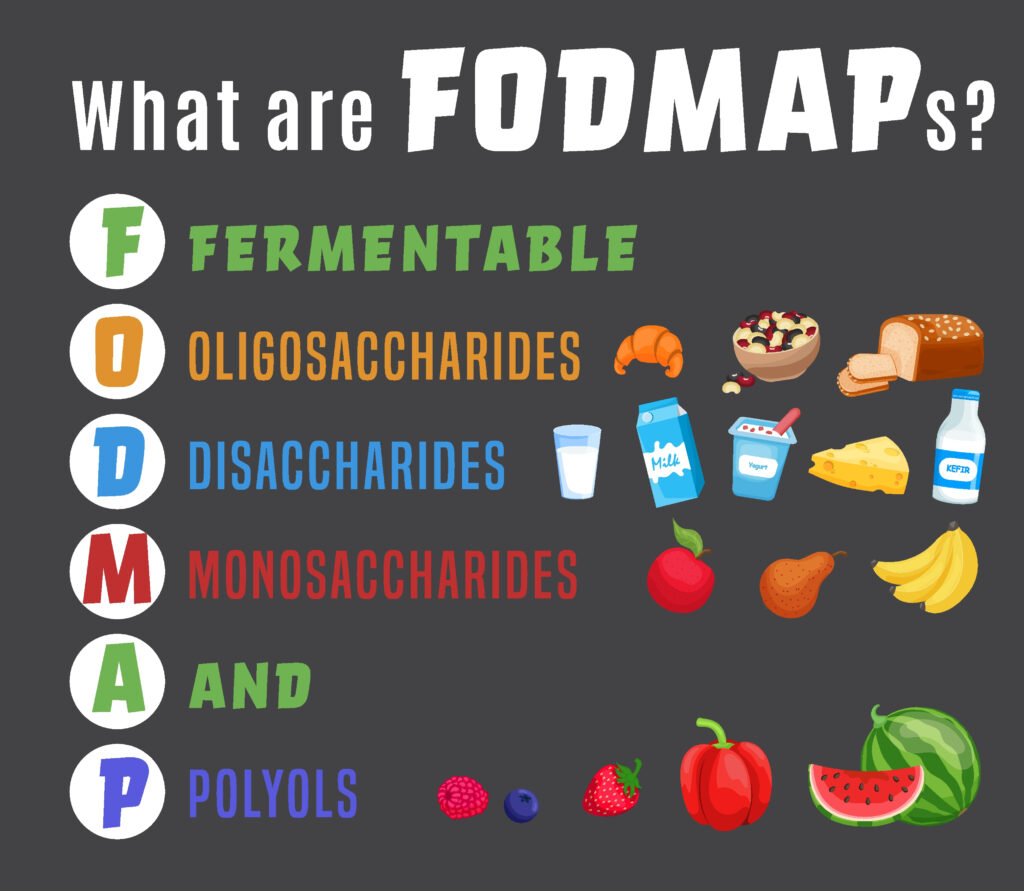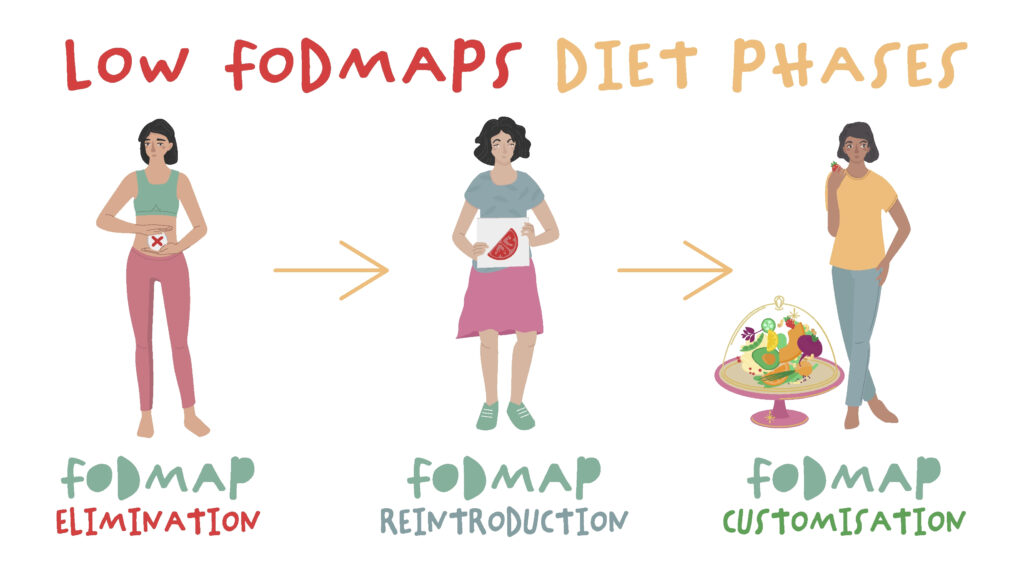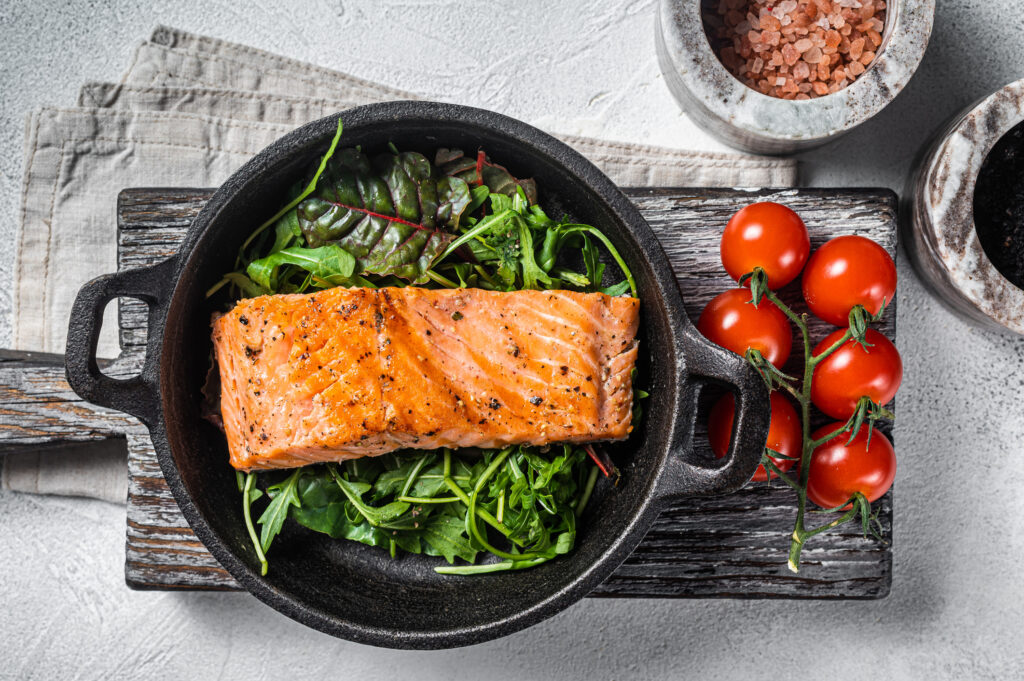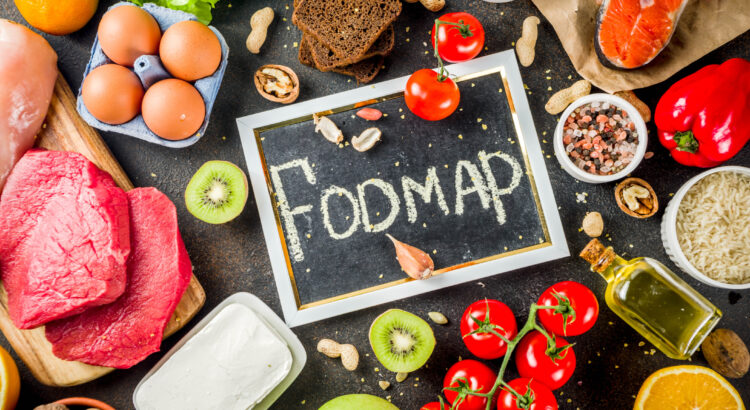Have you ever heard of people following a low FODMAP diet? FODMAP is an acronym that stands for fermentable oligosaccharides, disaccharides, monosaccharides, and polyols. These are short chain carbohydrates, or sugars, that are found in a variety of foods to varying degrees. These short chain carbohydrates resist digestion and are fermented in the gut by gut bacteria. Today we will discuss what some high FODMAP foods are, why some people are sensitive to them, the symptoms one may experience with a FODMAP sensitivity, and the steps you can take to determine if you are reacting to FODMAPs in the foods you eat.

High FODMAP Foods
Different types of foods contain FODMAPs in varying degrees. Some foods contain multiple FODMAP groups, and others may only contain one FODMAP group. Food is typically classified as being high, medium, or low in FODMAPs, but the portion size can make a difference. Some foods that are quite high in FODMAPs include beans, onions, garlic, dairy, wheat, apples, very ripe bananas, peaches, and pears to name a few. Here is a more comprehensive list.
How To Tell If You’re Sensitive to FODMAPs
The symptoms of reacting to FODMAPs can include a lot of gas production, bloating, abdominal discomfort, diarrhea, or constipation. These reactions can be the same symptoms of other food intolerances or sensitivities, so you won’t know for sure if you’re reacting to FODMAPs unless you try the elimination phase of a low FODMAP diet, which we will discuss below.

Low FODMAP Diet and Reintroduction Phase
The best thing to do if you suspect that you may be reacting to high FODMAP foods is to try an elimination diet. This is meant to be a short phase to see if your symptoms improve when following a low FODMAP diet. Then, the best thing to do is to try a testing phase where you test certain FODMAP groups in small portion sizes at first, then increase the portion size to find out what your personal tolerance level is.
Why Are Some People More Sensitive to FODMAPs than Others?
As mentioned above, FODMAPs get fermented by gut bacteria, which is what causes the unpleasant symptoms some people experience when eating these foods. We all have different ratios of a multitude of different types of bacteria in our gut, which is why there is such individuality in what different people may experience from consuming FODMAPs. If one has any degree of gut dysbiosis or small intestinal bacterial overgrowth (SIBO), this can result in a sensitivity to FODMAPs. If a person has an increased amount of pathogenic bacteria in their gut, this can lead to over-fermentation of carbohydrates and increase the production of gas. This can then further exacerbate any issues of gut dysbiosis, so the best thing to do if you are sensitive to FODMAPs is to work on improving your gut health. High FODMAP foods are typically great sources of prebiotics for a healthy gut, which can act like food for our good gut bacteria, so it’s not always ideal to eliminate these foods from your diet on a long term basis. You can read our previous blog all about prebiotics here.
Help and Resources For Low FODMAP Eating
If you suspect that FODMAPs are an issue for you and you would like some personal help navigating the elimination phase, reintroduction phase, and customization phase of a low FODMAP diet, you can work directly with a G-Plans nutritionist who can offer you the guidance and support you need. Another great resource is Monash University, which has done extensive testing on different foods to detect their FODMAP levels in varying portion sizes. They are always the most up to date on information regarding FODMAP levels, and continue to retest food periodically.
